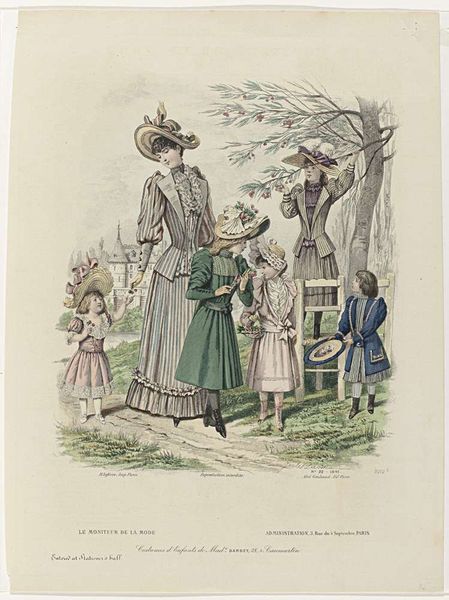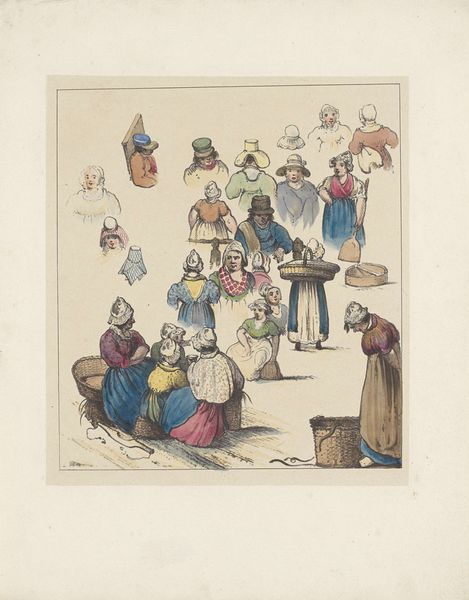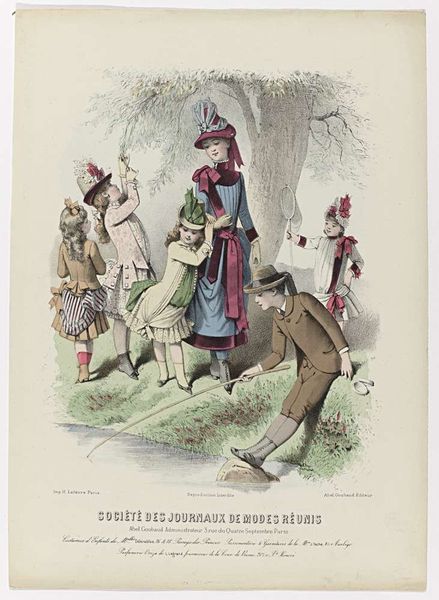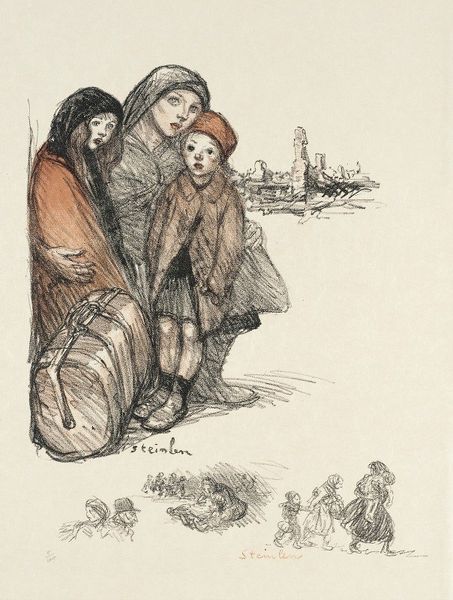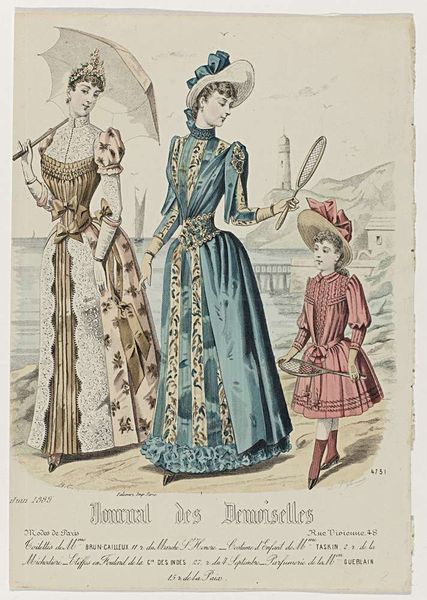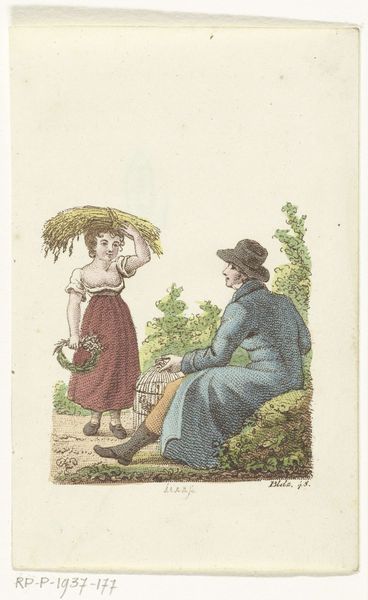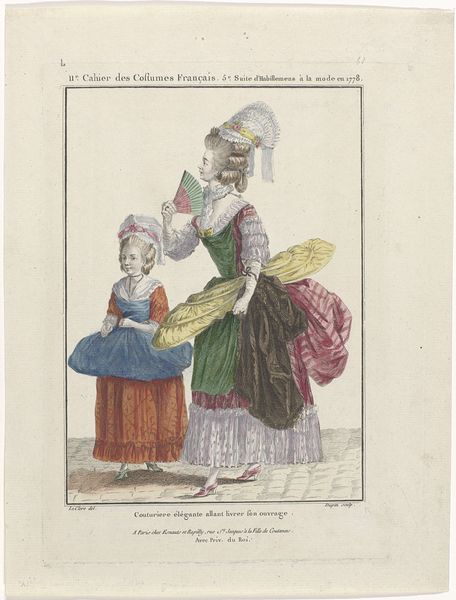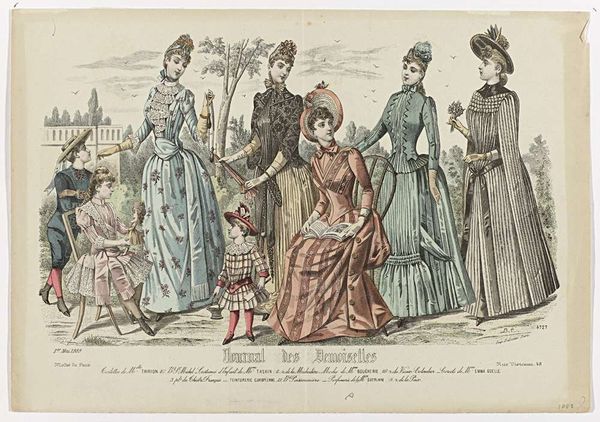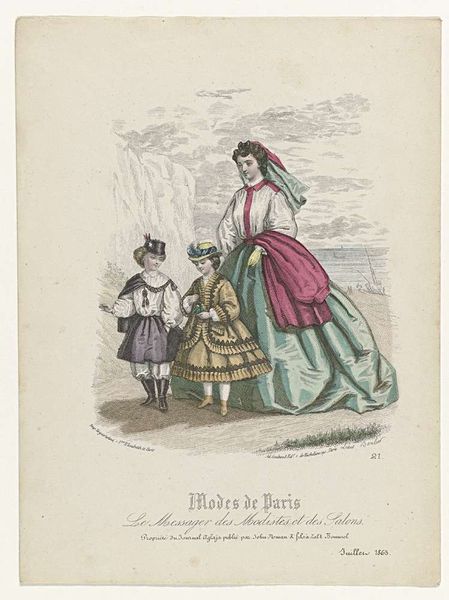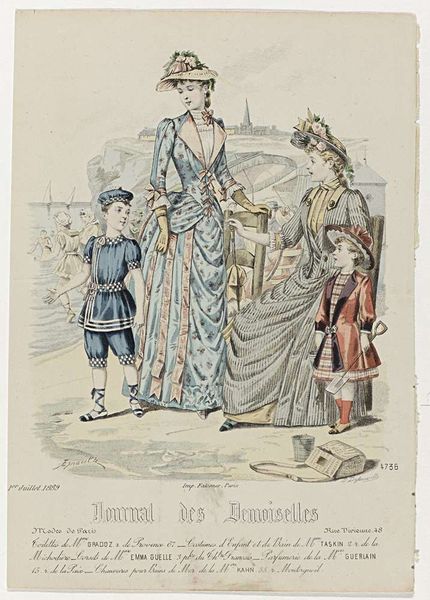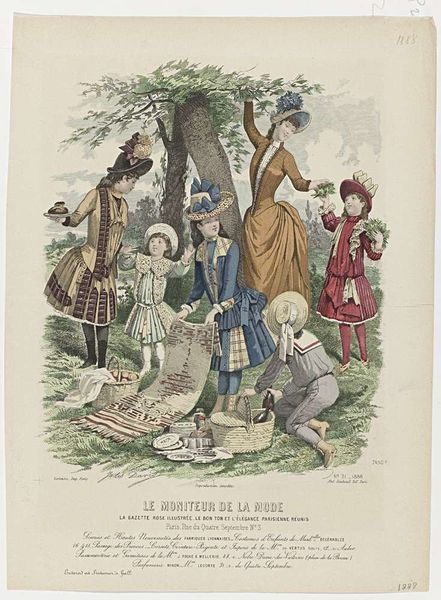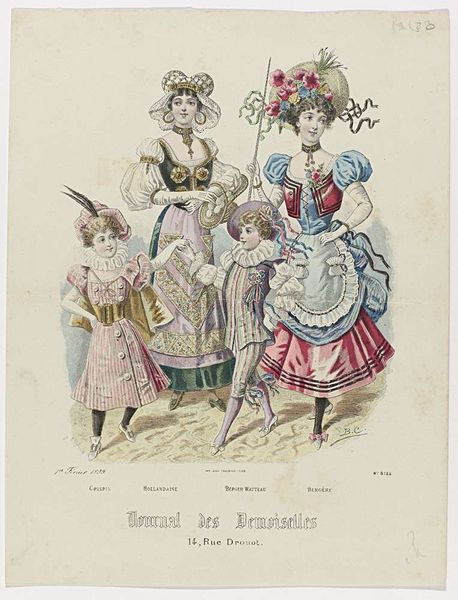
Dimensions: height 382 mm, width 270 mm
Copyright: Rijks Museum: Open Domain
Editor: Here we have an etching from 1884, titled "De Bazar, 1884, Nr. 17, Pl. 584" by an anonymous artist. It's quite charming, a scene of children with a woman at the beach, but there's something a bit melancholic about it, don't you think? What do you see in this piece? Curator: The seaside, as a visual trope, carries potent cultural echoes, doesn't it? Consider how often the shore acts as a liminal space—a border between the known and the unknown, childhood and adulthood. The woman with her parasol strikes a curious pose against the children playing – and in that we discern anxieties of societal norms of the era. It is interesting that she is at the margin rather than taking centre stage in this composition, wouldn't you say? Editor: That's a good point, her posture is very formal, as if detached from the children's play. Curator: Precisely. Look closer, though. The children's clothing. Does it echo a certain performance, a certain societal expectation already being imposed upon them? Their very being and engagement with the environment appear almost theatrical – symbolic for life itself as they play-act what will be their future responsibilities as grownups in an industrial society. How might that reading affect your initial sense of melancholia? Editor: That does shift my perspective. Knowing they might be “performing” changes how I view their actions. There's this sense of learned behavior being re-enacted, of social roles, instead of pure childish fun. Curator: Exactly. These details invite us to question the boundaries of innocence and societal constraints reflected by these actors. In many ways, they become metaphors for the broader performance of societal existence and industrial advancements. I mean, if one goes to "The Bazar," wouldn't one put on his/her best apparel? Editor: So the picture becomes more about social commentary rather than simply a snapshot of a day at the beach. It's fascinating to see how such an ordinary setting holds these complex undercurrents. Thank you! Curator: Indeed. By reading symbols we become alert to the cultural memory embedded in even seemingly simple images. And the seascape gains more depth because of the layers we have managed to uncover!
Comments
No comments
Be the first to comment and join the conversation on the ultimate creative platform.
